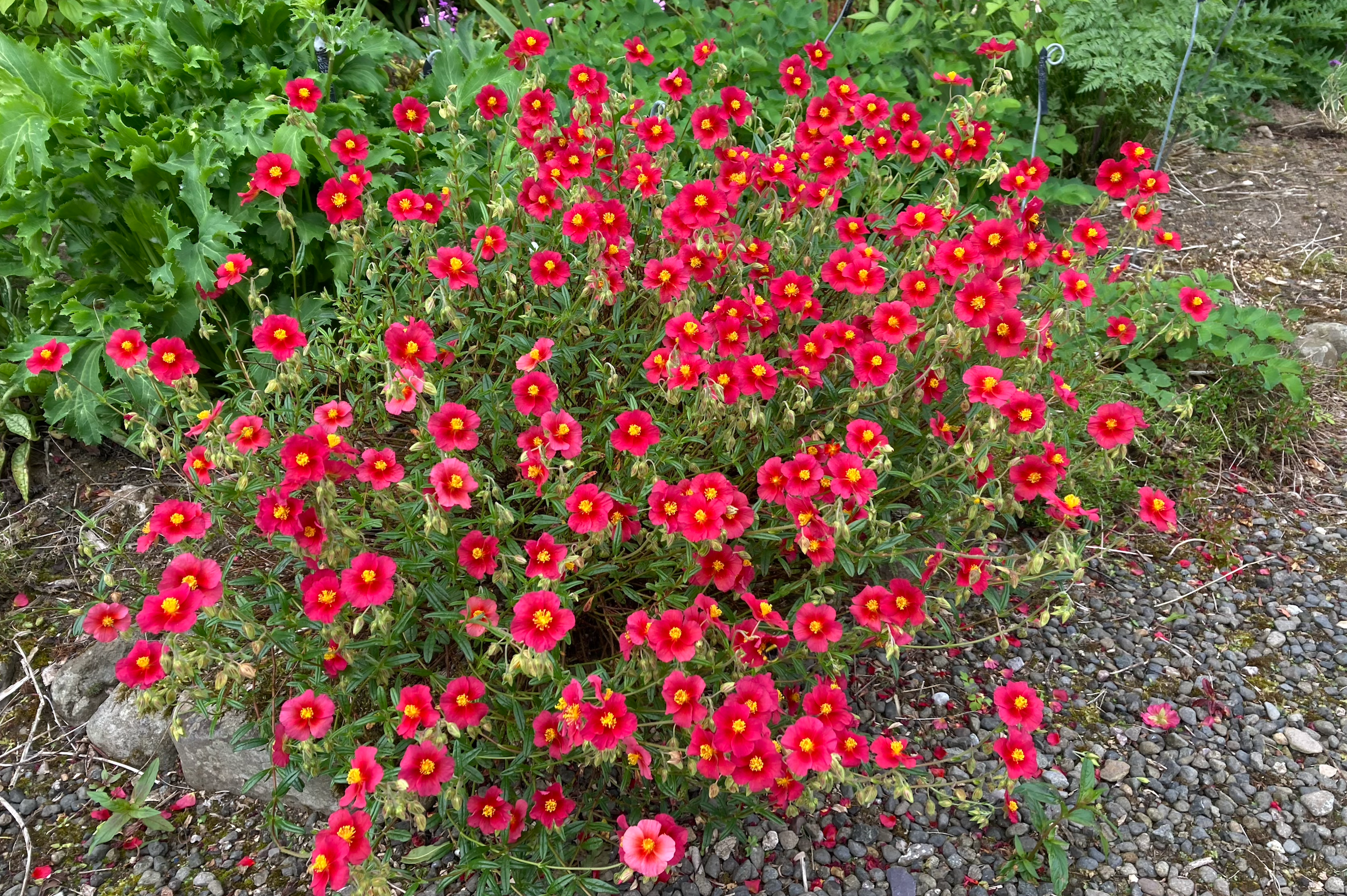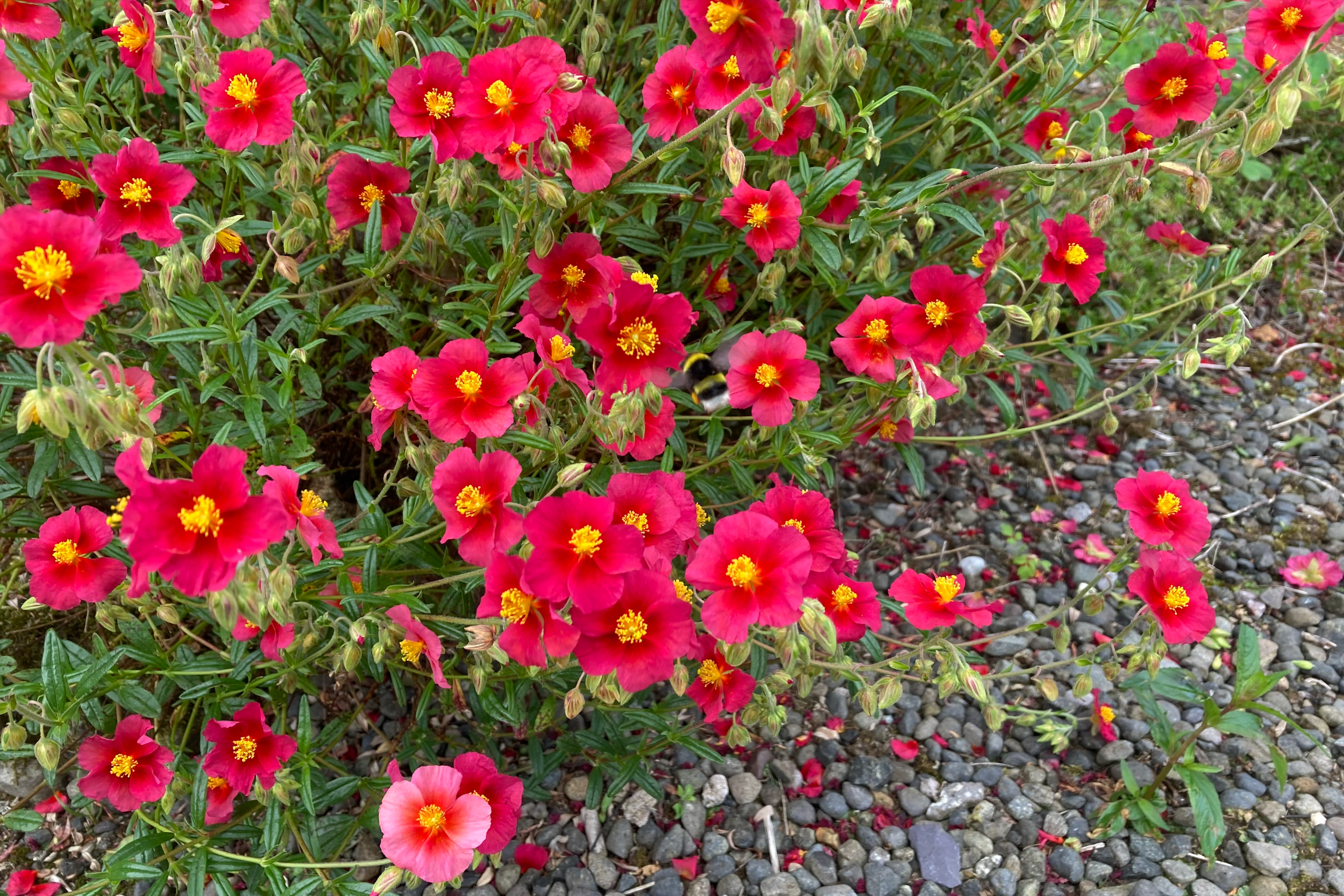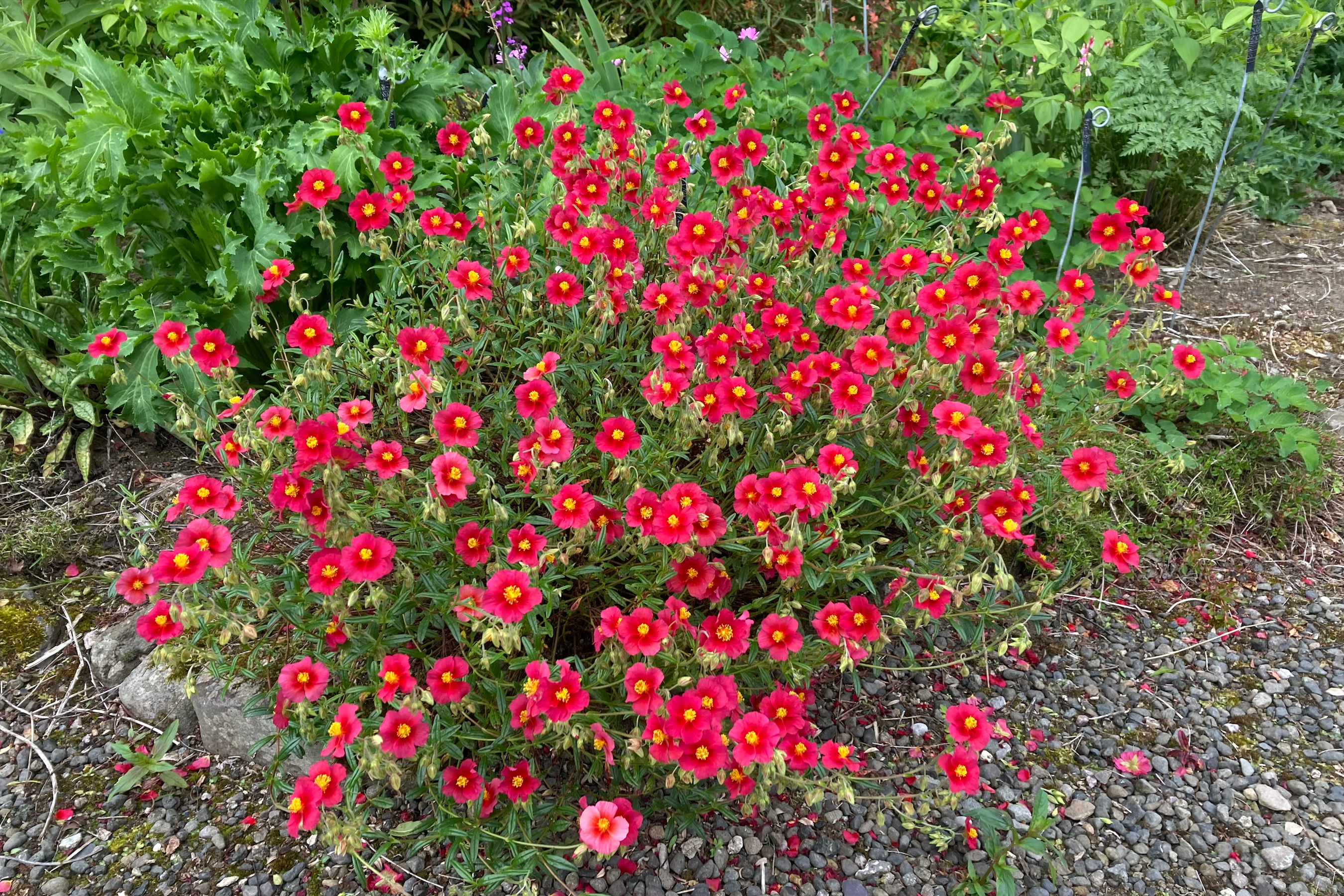Helianthemum 'Ben Ledi'
Approx. 0.5 litre pot
About this cultivar:
Helianthemum 'Ben Ledi' is a compact, spreading evergreen shrub with glossy dark green leaves with a lovely habit. Beautiful bright rose-pink flowers turning darker towards centre with a yellow eye are produced in spring and summer.
One of the 'Ben' rock roses which includes Ben Hope, Ben More, Ben Nada, Ben Ledi, Ben Kenobi, named after mountains in Scotland. These Scot-rock-roses are believed to have been first introduced by a man called John Nicoll (1838 - 1926) which the 1881 census has as a Jute weaver in Dundee. He introduced 17 cultivars in total. So this is and oldie, but a goodie.
Great along paths, in drys areas, alpine borders, even dry shade. But, given its Scot heritage, don't be afraid to try in wetter areas that aren't too boggy.
- Position: Full sun, partial shade
- Soil: Almost any soil, grows well in Ballyrobert
- Flowers: April, May, June, July, August, September
- Other features: Grows well in Ballyrobert, Drought Tolerant, Interesting Foliage or Fruit
- Hardiness: H4 - Hardy through most of the UK (-10 to -5°C), Fully hardy - grows well in Ballyrobert!
- Habit: Mat forming, bushy
- Foliage: Evergreen
- Height: 15 - 25 cm (0.5 - 0.75 ft)
-
Spread: 15 - 45 cm (0.5 - 1.5 ft)
- Time to full growth: 2 to 5 years
- Plant type: Shrub
- Colour: Green, red
- Goes well with: Try over a wall or in a seaside garden. As it is a Mediterranean plant why not try its relatives? Lavenders, Nepeta, Euphorbias and Origanums.
About this genus:
Helianthemum (hee-lee-AN-thee-mum) which translate as ‘turning towards the sun’ is commonly known as rock rose, sunrose, rushrose, or frostweed. It is a genus of about 110 species of flowering plants in the rock rose family (Cistaceae). They are widely distributed throughout the Northern Hemisphere, especially in the Mediterranean. There are New World species, but it has been proposed in 2011 that these be transferred to genus Crocanthemum. I believe a few of the Cistius species where transferred to the genus Helianthemum in 1824. This was when Michel Félix Dunal did some taxonomy-stuff and designated ‘Helianthemum tuberaria’ as the type species. I suspect this is still controversial as some sources still list some Helianthemum as Cistus almost 200 years later…. I’m just sticking to what the RHS says.
Helianthemum are usually shrubs or subshrubs, and some are annual or perennial herbs. We don’t have any annuals here. The leaves are oppositely arranged, but some plants may have alternately arranged leaves along the upper stems. The flowers, from spring to summer, are solitary or borne in an array of inflorescence types, such as panicles, racemes, or headlike clusters. The flower has five petals usually in shades of yellow, orange, or pink. A broader range of colours is available among the cultivars, including bright salmon-pink to dark red. The style at the center is tipped with a large stigma and the fruit is a capsule containing many seeds.
Helianthemum, like most plants, are known to form symbioses with mycorrhizal fungi. Helianthemum love fungi so much that in the Mediterranean they are associated with Terfeziaceae, the desert truffles.
Several Helianthemum species, and the numerous hybrids and cultivars derived from them, are widely grown as ornamental plants (not just for truffles). Helianthemum hybrids are often crosses among the species H. apenninum, H. nummularium and H. croceum. Tolerant of drought and salt spray, they exhibit the general hardiness that makes them welcome in a rock garden. They are often found cascading over a wall or some other sunny, well drained location. Although I should point out the cultivars we sell and grow in our garden are often in part-shade and clay soil. I’d say they’d grow almost anywhere in the British Isles that isn’t a puddle or a dark-room.
Companions? Well as it is a Mediterranean plant why not try its relatives? Lavenders, Nepeta, Euphorbias and Origanums.










